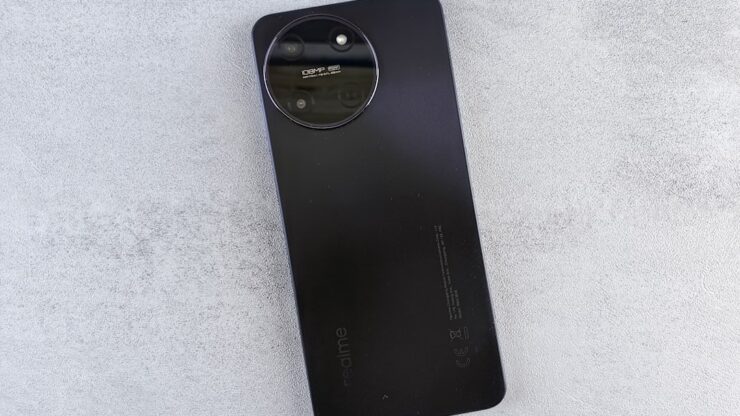The design and build quality of a device are often the first aspects that capture a user’s attention. In the realm of smartphones, manufacturers are increasingly focusing on aesthetics and tactile experience, striving to create devices that not only perform well but also feel premium in hand. A well-designed smartphone typically features a combination of materials such as glass, metal, and plastic, each contributing to the overall look and feel.
For instance, flagship models often utilize aluminum or stainless steel frames paired with Gorilla Glass for durability, providing a sleek and modern appearance while ensuring resistance to scratches and drops. Moreover, the ergonomics of a smartphone play a crucial role in user satisfaction. A device that fits comfortably in the hand, with buttons that are easily accessible, enhances the overall user experience.
The weight distribution is also significant; a well-balanced phone feels more natural to hold during extended use. Manufacturers like Apple and Samsung have set high standards in this regard, with their devices often featuring rounded edges and carefully considered dimensions that make them easy to grip. Additionally, attention to detail in design elements such as color options, finishes, and even the placement of logos can elevate a device from merely functional to a statement piece.
Honor Magic 5 Pro Display and Performance
The display is one of the most critical components of any smartphone, as it serves as the primary interface for user interaction. Modern smartphones typically feature OLED or AMOLED technology, which offers vibrant colors, deep blacks, and excellent contrast ratios. For example, devices like the Samsung Galaxy S series utilize Dynamic AMOLED displays that not only enhance visual quality but also support HDR content for an immersive viewing experience.
The resolution of these displays often reaches up to 1440p or even 4K in some high-end models, ensuring that every detail is crisp and clear. Performance is equally vital, as it dictates how smoothly a device operates under various conditions. The latest smartphones are equipped with powerful processors, such as Qualcomm’s Snapdragon series or Apple’s A-series chips, which provide exceptional speed and efficiency.
These processors are often paired with ample RAM—typically ranging from 6GB to 12GB—allowing for seamless multitasking and smooth operation of demanding applications. For instance, gaming on devices equipped with high-refresh-rate displays (up to 120Hz) becomes a visually stunning experience, with fluid animations and reduced motion blur. This combination of display technology and processing power ensures that users can enjoy everything from casual browsing to intensive gaming without any lag.
Camera and Imaging
In recent years, the camera has become one of the most significant selling points for smartphones. With advancements in sensor technology and computational photography, modern smartphones can capture stunning images that rival those taken with dedicated cameras. Many flagship devices now feature multiple lenses—wide-angle, telephoto, and ultra-wide—allowing users to experiment with different perspectives and compositions.
For example, the Google Pixel series is renowned for its exceptional image processing capabilities, producing high-quality photos even in challenging lighting conditions. The software behind the camera is just as important as the hardware. Features such as Night Mode, Portrait Mode, and AI enhancements have transformed how users approach photography.
Night Mode allows for impressive low-light photography by utilizing longer exposure times and advanced algorithms to reduce noise. Portrait Mode creates a bokeh effect that highlights subjects while softly blurring the background, mimicking the look of professional cameras. Additionally, video capabilities have also seen significant improvements, with many smartphones now supporting 4K recording at high frame rates and advanced stabilization features that make capturing smooth video effortless.
Battery Life and Charging
| Device | Battery Life (hours) | Charging Time (hours) |
|---|---|---|
| iPhone 12 | Up to 17 | Up to 2 |
| Samsung Galaxy S21 | Up to 24 | Up to 1.5 |
| Google Pixel 5 | Up to 48 | Up to 2.5 |
Battery life remains a critical consideration for smartphone users who rely on their devices throughout the day. The capacity of smartphone batteries is typically measured in milliampere-hours (mAh), with modern devices often featuring batteries ranging from 3,000 mAh to over 5,000 mAh. However, battery life is not solely determined by capacity; software optimization plays a crucial role in ensuring that devices can last through extensive use without requiring frequent recharges.
Manufacturers like OnePlus and Xiaomi have made strides in this area by implementing efficient power management systems that extend battery life significantly. Charging technology has also evolved rapidly, with many smartphones now supporting fast charging capabilities that can replenish a significant portion of battery life in a short amount of time. For instance, devices equipped with Warp Charge or Super Charge technology can achieve 50% battery life in just 30 minutes.
Wireless charging has become increasingly popular as well, offering convenience without the hassle of cables. Some models even support reverse wireless charging, allowing users to charge other devices like earbuds or smartwatches directly from their smartphones. This versatility in charging options enhances user convenience and aligns with the fast-paced lifestyle many lead today.
Software and User Experience
The software experience on a smartphone can significantly influence user satisfaction. Operating systems like Android and iOS offer distinct ecosystems with unique features and interfaces. Android provides a high degree of customization, allowing users to tailor their home screens with widgets, app icons, and themes according to personal preferences.
In contrast, iOS is known for its streamlined interface and seamless integration across Apple devices, creating an ecosystem that many users find appealing due to its simplicity and reliability. User experience extends beyond just the operating system; it encompasses app performance, system updates, and customer support as well. Regular software updates are essential for maintaining security and introducing new features.
Manufacturers like Google are praised for their timely updates on Pixel devices, ensuring users have access to the latest enhancements without delay. Additionally, the availability of apps plays a crucial role in user experience; both platforms boast millions of applications catering to various needs—from productivity tools to entertainment options—ensuring that users can find what they need easily.
Connectivity and Network Performance
In an increasingly connected world, network performance is paramount for smartphone users who rely on their devices for communication and data access. The advent of 5G technology has revolutionized mobile connectivity by offering significantly faster download and upload speeds compared to previous generations. This advancement allows users to stream high-definition content seamlessly, engage in online gaming without lag, and download large files in mere seconds.
Smartphones equipped with 5G capabilities are becoming more common, with manufacturers like Samsung and Apple leading the charge in providing devices that support this next-generation network. Wi-Fi connectivity is another critical aspect of network performance. Honor Magic 5 Pro support various Wi-Fi standards, including Wi-Fi 6 (802.11ax), which offers improved speed and efficiency in crowded environments.
This is particularly beneficial in urban areas where multiple devices may be competing for bandwidth on the same network. Bluetooth connectivity has also seen enhancements with the introduction of Bluetooth 5.0 and beyond, allowing for faster data transfer rates and improved range when connecting to accessories such as headphones or smartwatches.
Accessories and Add-ons
The ecosystem surrounding smartphones has expanded significantly with a plethora of accessories designed to enhance functionality and user experience. Cases are among the most common accessories, providing protection against drops and scratches while allowing users to express their personal style through various designs and materials. Brands like OtterBox and Spigen offer rugged cases for those who prioritize durability, while others focus on slim designs that maintain the phone’s aesthetic appeal.
In addition to protective cases, other accessories such as screen protectors are essential for maintaining display integrity over time. Wireless earbuds have gained immense popularity alongside smartphones; products like Apple’s AirPods or Samsung’s Galaxy Buds offer seamless integration with their respective devices while providing high-quality audio experiences. Furthermore, portable chargers and power banks have become indispensable for users who require extended battery life on-the-go.
These accessories not only enhance the functionality of smartphones but also cater to diverse user needs.
Overall Verdict and Conclusion
When evaluating a smartphone, it is essential to consider various factors that contribute to its overall performance and user satisfaction. From design and build quality to display technology and camera capabilities, each aspect plays a vital role in shaping the user experience. The advancements in battery technology and charging solutions further enhance usability by ensuring that devices can keep up with modern demands.
Software experience is equally important; an intuitive interface combined with regular updates can significantly impact how users interact with their devices daily. Connectivity options continue to evolve as well, with 5G technology paving the way for faster data access and improved network performance. Ultimately, the right smartphone will depend on individual preferences and needs—whether one prioritizes camera quality for photography or seeks robust performance for gaming.
The vast array of accessories available further allows users to customize their experience according to their lifestyle requirements. As technology continues to advance at a rapid pace, consumers can expect even more innovative features in future smartphone releases that will redefine what is possible in mobile communication and entertainment.
FAQs
What is the Honor Magic 5 Pro?
The Honor Magic 5 Pro is a smartphone developed by Honor, a sub-brand of Huawei. It is known for its advanced camera features, high-quality display, and powerful performance.
What are the key features of the Honor Magic 5 Pro?
The Honor Magic 5 Pro features a quad-camera setup with a 108MP main sensor, a 100x zoom periscope lens, and advanced AI capabilities. It also boasts a 6.53-inch OLED display, a powerful Kirin 990+ processor, and 5G connectivity.
What sets the Honor Magic 5 Pro apart from other smartphones?
The Honor Magic 5 Pro stands out for its innovative camera technology, including the 100x zoom periscope lens and AI-enhanced photography features. It also offers a sleek design, high-quality display, and fast performance.
Is the Honor Magic 5 Pro worth the investment?
The Honor Magic 5 Pro is a high-end smartphone with advanced features, making it a worthy investment for users who prioritize photography, display quality, and performance in a mobile device. However, individual preferences and budget should be considered before making a purchase decision.






